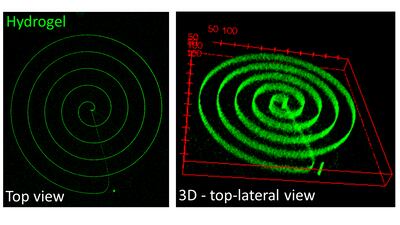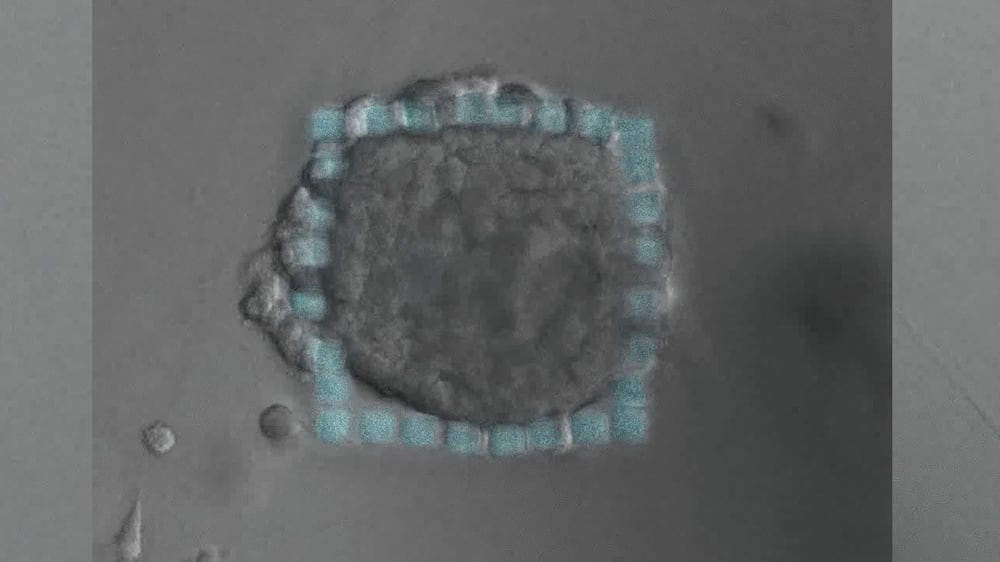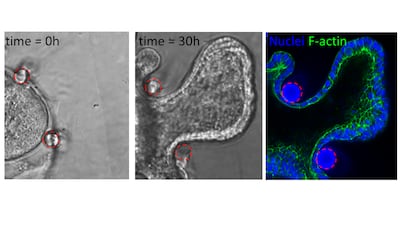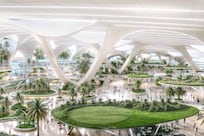The creation of human organs in a laboratory could become a reality at a UAE-backed research centre in London that is adapting 3D printing to create functioning tissue.
A new technique from the Zayed Centre for Research into Rare Disease in Children involves 3D bio-printing near or around microscopic organs, grown from stem cells in the lab and known as organoids.
“These 3D structures then act as barriers to guide the growth of the mini organs in specific directions or patterns”, Dr Giovanni Giobbe, the co-lead author of the research, told The National.
Using the 3D printed structures, the researchers were able to guide the growth of organoids into specific shapes that they could then visualise using a high specification microscope

“Precise control over cell development is of great importance in various fields, such as regenerative medicine, disease modelling and drug testing,” said Dr Giobbe.
“The ability to make cells into a specific shape or type allows the creation of engineered tissues and organs, providing potential solutions for organ transplantation and regenerative therapies.”
The centre, which is part of the Great Ormond Street Hospital for Children, aims to break new ground in understanding and treating rare childhood diseases.
It was partly born from a £60 million ($82.6 million) donation made by Sheikha Fatima, Mother of the Nation, in 2014. Honouring her husband, the UAE Founding Father, the late Sheikh Zayed bin Sultan Al Nahyan, the centre's name reflects their commitment to pioneering medical care for children.
Now in its fourth year, the centre is making waves in genetic therapy and tackling health crises like Covid-19, but it is also looking to the future with 3D bio-printing.
Dr Giobbe describes the technique as “an advanced technology where scientists and researchers can create three-dimensional structures using biological materials”.
“It involves carefully depositing these materials layer by layer in a specific pattern to build complex microscopic 3D shapes,” he said.
The technique could transform the landscape of regenerative medicine by developing organoids.
The power of precision
Scientists from the Great Ormond Street Hospital Biomedical Research Centre and the University of Padova, Italy are at the forefront of the field.
Their research, published in the Nature Communications journal, provides new insight into how 3D bio-printing can control the shape, activity and direction of tissue growth.
The study reveals the successful development of a technique to create solid structures within a pre-existing gel, controlling the growth pattern in real time.
Watch UK experiment into cancer growth

Cells in the organoid develop in a precise, controlled manner, offering new understanding of malformations that occur in early pregnancy.
The benefits of 3D bio-printing for organ research and regenerative medicine include everything from “the creation of accurate organ models for drug testing, personalised organ replacement and regenerative therapies”, Dr Giobbe said.
The technology promises to help create more accurate models of diseases and develop biologically accurate “patches” for living organs.
This involves creating specialised tissues using living cells to repair or replace damaged organ parts, the researchers said.
Dr Giobbe said the motivation for exploring the technique was so that structures seen in the body could be replicated.
“The overall aim of our research was to develop a novel method to control and direct the growth of biological tissues to better understand the importance of geometry in organ development,” he said.

Zayed Centre for Research
The centre is home to cutting-edge research in organoid science in partnership with Great Ormond Street, the hospital's charity and University College London.
The team acknowledges that a number of challenges must be overcome before 3D bio-printing can be used to create fully functioning organs, such as the complexity of organs, preventing immune rejection, improving production time and scalability, ethical considerations and cost-effectiveness.
The centre has a diverse range of specialities, including cardiology, respiratory medicine, dermatology, immunology and neonatal and paediatric surgery. Organoids are an area of particular promise.
These tissues have typically grown in an uncontrolled manner, unable to mimic the complex structure of natural organs. But 3D bio-printing offers a solution to this.
The “groundbreaking technology holds the potential to revolutionise medicine,” Dr Giobbe said.
“It can be used to engineer tissues for various medical purposes, including skin grafts for burn victims, cartilage and bone replacement for orthopaedic patients, and blood vessels for cardiovascular applications.”
The UAE's vision: A global 3D printing capital
The UAE aims to be a global leader in 3D printing technology, with an emphasis on medical uses. The Dubai Health Authority aims to produce artificial limbs using 3D printing for less than Dh400 by 2025.
The value of 3D printed medical products in Dubai is projected to reach Dh1.7 billion by 2025.







